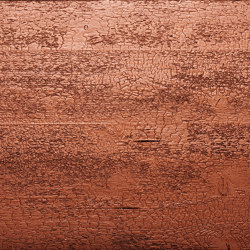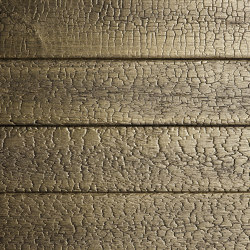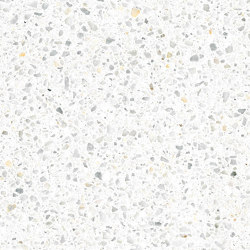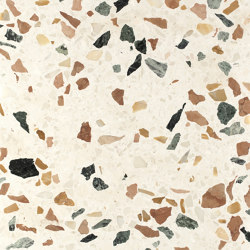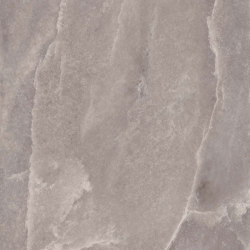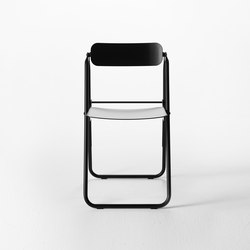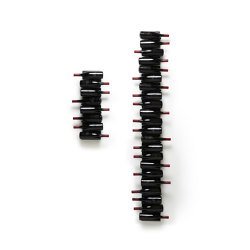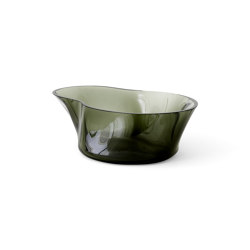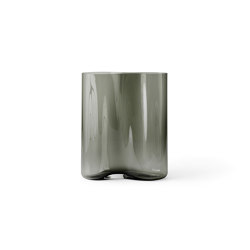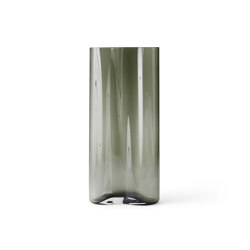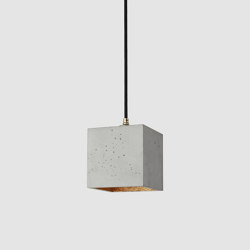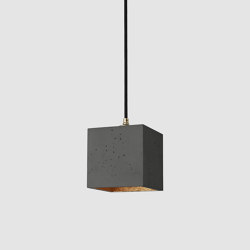Sobre Poesia
DESCUBRE MáS SOBRE POESIA
A COMPANY IN THE ‘PIAZZA’
Whilst in everyday Italian language ‘piazza’ means town or village square, in Muranese glass working terminology it refers to the basic autonomous productive unit able to produce a piece of glassware from start to finish. At the head of this unit is the ‘maestro’ who coordinates a team that goes from four to eight men. ‘Piazza’ defines, as can be imagined, the space before the furnace around which the team moves. In the wider sense the ‘piazza’ is also the place, par excellence, of exchange and interaction, and it is also in this dimension that it is lived by the men who love working in it.
Vetreria Resanese S.p.A., a Treviso company founded in 1983 by Danilo Macchion with his collaborators and the headquarters of POESIA®, has five similar ‘piazze’, for a total of 100 quintals of glass worked per day. Already an industrial quantity, however, one that is obtained exclusively with artisan techniques from Muranese tradition.
IT’S EASY TO SAY GLASS...
The term crystal indicates a type of transparent glass with a particular brilliancy that has a high concentration of lead oxide (in fact it is also called lead glass).
In Murano however, this pure and transparent glass is called ‘cristallo’ (crystal), even if lead is not used in the Muranese formulation. Venetian crystal is a particularly brilliant, homogenous, glass that is absolutely free of any colouration and is a sodium calcium glass, which makes it suitable for longer manufacturing processes and for the production of blown glass, because it maintains its plastic state for a long time.
The secret of the quality of Venetian crystal produced by POESIA® lies in the purity of the raw materials used, firstly the silica, in the clever use of decolouring agents, in the accurate preparation of the vitrifiable mixture and in how the fusion is carried out. As any self-respecting glazier, Vetreria Resanese also uses its own composition that is unique and a jealously guarded secret, because naturally it is not sufficient to found just any mix of vitrifying substances and fondants to get a good glass.
The extraordinary transparency of Venetian crystal of POESIA® can be best appreciated in the glass blocks from the Classic series that is perfectly neutral and crystalline notwithstanding its 5 centimetres of thickness.
EACH TO HIS OWN
The addition of specific chemical components or the use of particular kinds of processes give rise to special types of glass. Vetreria Resanese has mastery of several different techniques, all originating from the Muranese glass art. The following are the main types of special glass used in the POESIA® range of products.
Mould cast glass: is the oldest method for working glass. To produce it, slabs or glass tiles are used - specially made moulds of different sizes between which the melted glass is directly coloured. With this technique, but using different shaped moulds, both the glass blocks and the glass tiles and border tiles of the Vetroattiv collection are produced.
Hot glass colouring without melting: this procedure was invented by Ercole Barovier towards the end of the 1920’s and consists in the inclusion between two layers of transparent and incandescent, of chemical substances or other elements that due to the high temperature assume particular colours and create extraordinarily beautiful effects, that are unrepeatable. From the inclusion of special colouring oxides are born the Cloud & Soul glass blocks, whilst from the inclusion of really fine metal particles are born the Silver e Gold glass blocks, that all make up the Classic range.
Bullicante glass: encloses a myriad or air bubbles and is obtained by pouring the glass in a special mould with metal spikes. The spikes leave tiny holes in the glass that, when covered with more glass, hold small pockets of air. This technique was established in Murano in the 1930’s and allow for the creation of particularly suggestive objects. The glass block Bubble from the Classic series is a good example of “bullicante” glass (glass containing a regular, controlled pattern of bubbles)
Glass treated with acid: for the process of etching, hydrofluoric acid is used, the only acid able to erode glass. The resulting finish obtained is a smooth, silky and homogeneous surface, pleasant to touch, called “satin-finish”. The etching renders the surface softer and does not get dirty as easily with respect to sand-blasted finishes. The glass of the Satin block from the Artiko series is treated with acid.
Lattimo glass: this glass was invented in Murano around 1450 to imitate the first precious Chinese porcelain that had around that time arrived in Venice. It is a white opaque glass with a milky finish obtained thanks to opacifying agents it contains, minute crystals of calcium fluoride and sodium that reflect the light thus determining both the opacity and the characteristic colouration. The diffuser of the lamp ‘White Belt’ (from the Vetroattivo collection) is in lattimo glass.
Jacketed glass: with this technique incandescent glass is dripped onto a different coloured glass destined to remain on the inside. For example the diffuser of the Milkie lamp (from the Vetroattivo collection) is made in lattimo glass jacketed in glass crystal.
Lavorazione a filo di vetro colato: a fine thread of glass descends from the glass melting pot and is wound by hand around a mould. This is the technique used for the realisation of the lamps Firehead and Twist (of fate) (from the Vetroattivo collection)
Lavorazione a nastro di filo colato: the glazier’s positions, by hand, the strip of glass, whilst it is still pliable, in skilfully placed swirls around a mould, so as to create a kind of ‘lace’ in thick transparent glass. With this technique the lamps Crystal Tower e Styllight (Vetroattiv collection) are produced.
A COMPANY IN THE ‘PIAZZA’
Whilst in everyday Italian language ‘piazza’ means town or village square, in Muranese glass working terminology it refers to the basic autonomous productive unit able to produce a piece of glassware from start to finish. At the head of this unit is the ‘maestro’ who coordinates a team that goes from four to eight men. ‘Piazza’ defines, as can be imagined, the space before the furnace around which the team moves. In the wider sense the ‘piazza’ is also the place, par excellence, of exchange and interaction, and it is also in this dimension that it is lived by the men who love working in it.
Vetreria Resanese S.p.A., a Treviso company founded in 1983 by Danilo Macchion with his collaborators and the headquarters of POESIA®, has five similar ‘piazze’, for a total of 100 quintals of glass worked per day. Already an industrial quantity, however, one that is obtained exclusively with artisan techniques from Muranese tradition.
IT’S EASY TO SAY GLASS...
The term crystal indicates a type of transparent glass with a particular brilliancy that has a high concentration of lead oxide (in fact it is also called lead glass).
In Murano however, this pure and transparent glass is called ‘cristallo’ (crystal), even if lead is not used in the Muranese formulation. Venetian crystal is a particularly brilliant, homogenous, glass that is absolutely free of any colouration and is a sodium calcium glass, which makes it suitable for longer manufacturing processes and for the production of blown glass, because it maintains its plastic state for a long time.
The secret of the quality of Venetian crystal produced by POESIA® lies in the purity of the raw materials used, firstly the silica, in the clever use of decolouring agents, in the accurate preparation of the vitrifiable mixture and in how the fusion is carried out. As any self-respecting glazier, Vetreria Resanese also uses its own composition that is unique and a jealously guarded secret, because naturally it is not sufficient to found just any mix of vitrifying substances and fondants to get a good glass.
The extraordinary transparency of Venetian crystal of POESIA® can be best appreciated in the glass blocks from the Classic series that is perfectly neutral and crystalline notwithstanding its 5 centimetres of thickness.
EACH TO HIS OWN
The addition of specific chemical components or the use of particular kinds of processes give rise to special types of glass. Vetreria Resanese has mastery of several different techniques, all originating from the Muranese glass art. The following are the main types of special glass used in the POESIA® range of products.
Mould cast glass: is the oldest method for working glass. To produce it, slabs or glass tiles are used - specially made moulds of different sizes between which the melted glass is directly coloured. With this technique, but using different shaped moulds, both the glass blocks and the glass tiles and border tiles of the Vetroattiv collection are produced.
Hot glass colouring without melting: this procedure was invented by Ercole Barovier towards the end of the 1920’s and consists in the inclusion between two layers of transparent and incandescent, of chemical substances or other elements that due to the high temperature assume particular colours and create extraordinarily beautiful effects, that are unrepeatable. From the inclusion of special colouring oxides are born the Cloud & Soul glass blocks, whilst from the inclusion of really fine metal particles are born the Silver e Gold glass blocks, that all make up the Classic range.
Bullicante glass: encloses a myriad or air bubbles and is obtained by pouring the glass in a special mould with metal spikes. The spikes leave tiny holes in the glass that, when covered with more glass, hold small pockets of air. This technique was established in Murano in the 1930’s and allow for the creation of particularly suggestive objects. The glass block Bubble from the Classic series is a good example of “bullicante” glass (glass containing a regular, controlled pattern of bubbles)
Glass treated with acid: for the process of etching, hydrofluoric acid is used, the only acid able to erode glass. The resulting finish obtained is a smooth, silky and homogeneous surface, pleasant to touch, called “satin-finish”. The etching renders the surface softer and does not get dirty as easily with respect to sand-blasted finishes. The glass of the Satin block from the Artiko series is treated with acid.
Lattimo glass: this glass was invented in Murano around 1450 to imitate the first precious Chinese porcelain that had around that time arrived in Venice. It is a white opaque glass with a milky finish obtained thanks to opacifying agents it contains, minute crystals of calcium fluoride and sodium that reflect the light thus determining both the opacity and the characteristic colouration. The diffuser of the lamp ‘White Belt’ (from the Vetroattivo collection) is in lattimo glass.
Jacketed glass: with this technique incandescent glass is dripped onto a different coloured glass destined to remain on the inside. For example the diffuser of the Milkie lamp (from the Vetroattivo collection) is made in lattimo glass jacketed in glass crystal.
Lavorazione a filo di vetro colato: a fine thread of glass descends from the glass melting pot and is wound by hand around a mould. This is the technique used for the realisation of the lamps Firehead and Twist (of fate) (from the Vetroattivo collection)
Lavorazione a nastro di filo colato: the glazier’s positions, by hand, the strip of glass, whilst it is still pliable, in skilfully placed swirls around a mould, so as to create a kind of ‘lace’ in thick transparent glass. With this technique the lamps Crystal Tower e Styllight (Vetroattiv collection) are produced.
DESCUBRE MáS SOBRE POESIA


